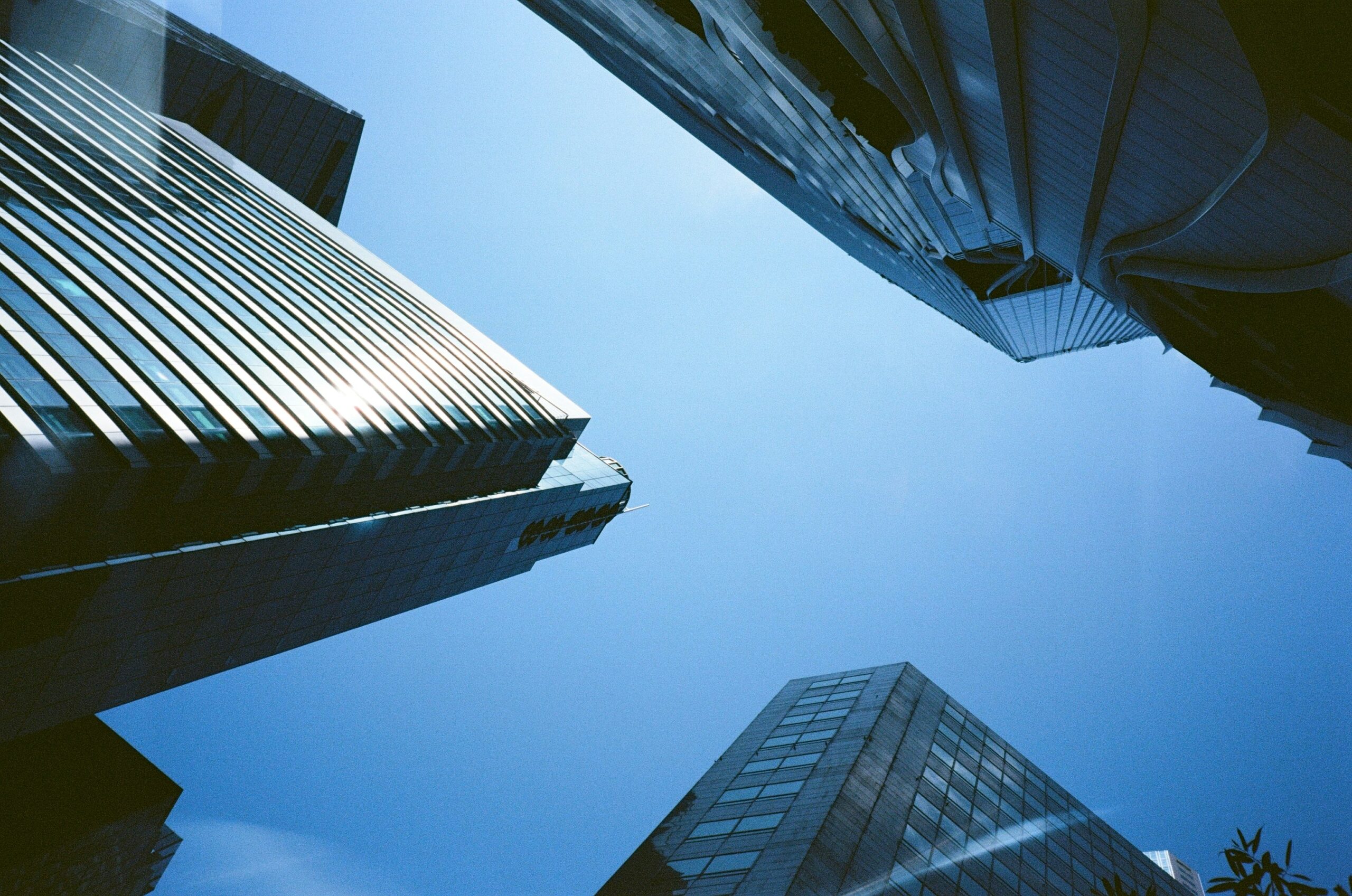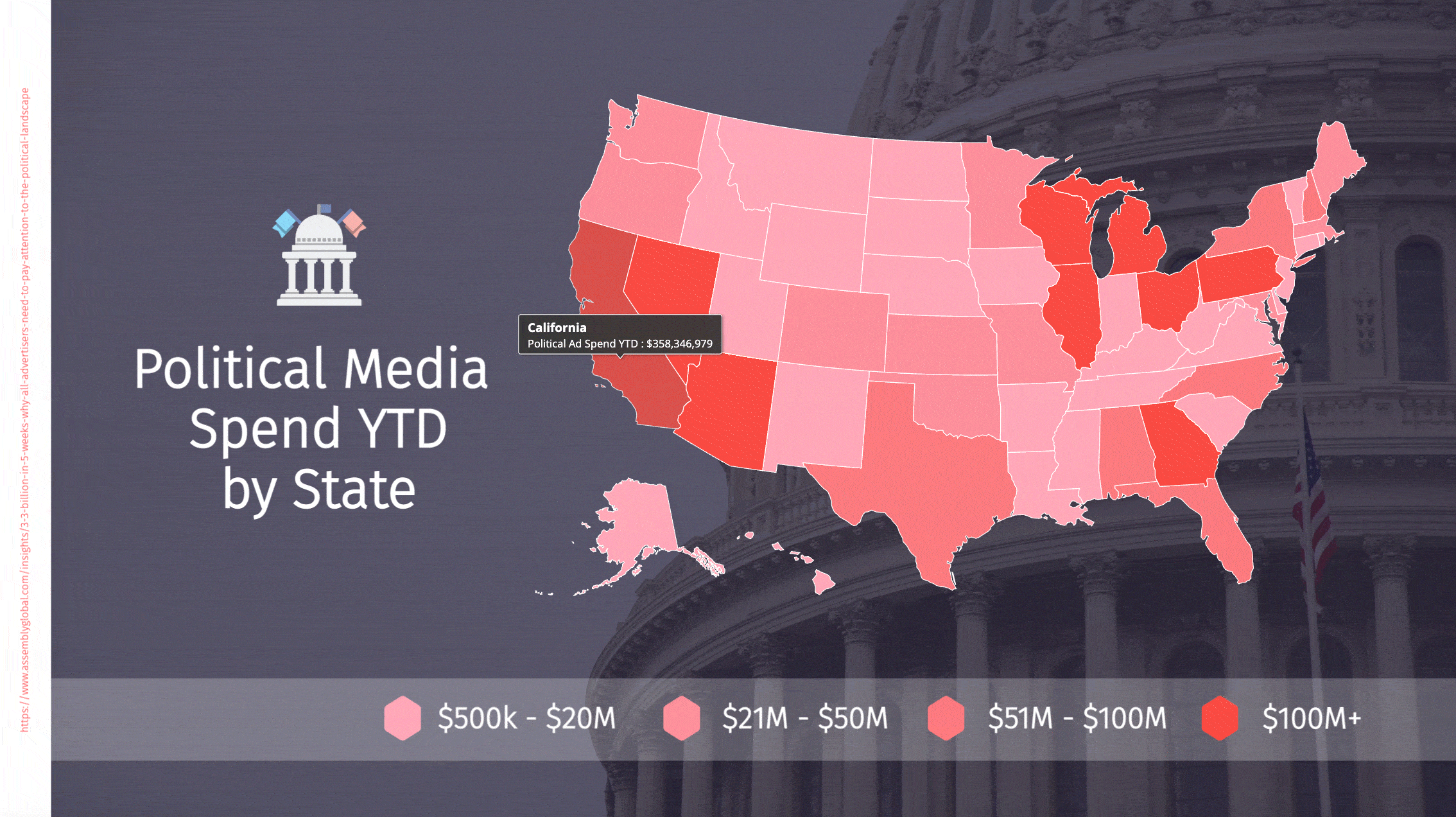By
Mark Penn
Chairman and CEO, Stagwell
CONTACT
hello@stagwellglobal.com
SIGN UP FOR OUR INSIGHTS BLASTS

When I ran campaigns, I used to lament that corporations would spend more on marketing a hamburger than marketing political ideas and efforts. Back then, campaigns were struggling shoestring enterprises. No longer.
Today, campaigns and issue groups spend billions of dollars (much of it ineffectively) on communicating to voters, and fundraising at large has become big business. Ironically, the rocket fuel for all this was not the much-maligned Supreme Court decision Citizens United that gave corporations political speech rights. Rather, it was the internet – opening up a far speedier and cost-effective method of motivating voters and fundraising from them. Everything we condemn about politics and social media today – the speed of clickbait, the sensationalizing of small news events, the partisan divide – has paved the way for online fundraising and its explosive growth.
Political advertising spend is rapidly breaking records
Political advertising will hit $7.8bn in the 2022 midterm elections – nearly approaching the $8.5bn spent across TV, radio and digital media in the 2020 presidential cycle. We are seeing continued growth in campaign spending, and each mid-term is coming close to the previous presidential runs in spend. Each president leaps to a new record in political expenditures. It will take a set of really mundane candidates with a runaway winner to break this ever-increasing cycle. Absent that, this is a double-digit growth spiral for several more election cycles. I never thought I would see $10m Congressional races and $100m Senate contests, and yet those are now everyday occurrences.
Digital fundraising is rising at a faster rate than overall spending
Of the $14.4bn in paid media spent during the 2020 cycle, 49% was raised online. The 2022 cycle should exceed $14bn in paid media spend, with over 60% likely to come from online fundraising. To put that in context – in 2014, less than 9% of the $4.4bn in contributions came in via online donors. Democrats, who are notably vocal about money in politics, spend the most – generally about 50% more than the Republicans.
Donors today are largely first-timers – and start small
For most donors over the last few cycles, giving to politics has been a new experience. Most of these contributions aren’t from big-dollar donors or PACs, but low-dollar donations from average Americans giving amounts between $30 and $100 (76.1% of Act Blue Democratic donors in 2020 were first-time donors).
Americans have a love-hate relationship with political giving. When asked to give $1 on their tax return to fund campaigns, most Americans said ‘no’ to the voluntary check-off, and the fund was running out of money. Taxpayers generally believed politicians should finance their own campaigns and leave the public out of them. In the ‘70s and ‘80s, candidates used direct mail to gather low-dollar gifts, but it was slow and expensive. In 2008, social media entered the scene and spilled over into news and politics. With its proliferation of inflammatory messages and clickbait, social media was the ideal incubator for online giving. While less than 1% of voters donated to campaigns in the past, that number is now up to 10% and continues to grow.
How companies can mimic political fundraising techniques
I always call online fundraisers the best marketers in the world. Why? Because in return for their funds, consumers get absolutely nothing of tangible value – no product and not even a tax deduction.
What makes them such good marketers? They believe in math. They have hundreds of people who craft messages, then test them methodically and go big with the ones that work. They refine their lists, carefully managing their communications to people to avoid overload or confusing and contradictory messages. And they utilize low-cost, effective messaging techniques, driving campaigns through email and increasingly via text messaging, as consumers switch their preferred communication modes.
Today, these fundraisers employ the process and rigor that most corporations should envy: ample message creation, thorough testing, careful media mix modeling and rigorous adherence to performance standards and return on investment. Politics once again leads the way in how to structure and carry out effective online marketing. This rigorous approach would and is working for commercial online marketing, though retail marketers have more limits on how aggressive they can be. Still, they can treat Thanksgiving, Prime Days and Christmas as a kind of commercial election day, working up to harvesting sales in the same way that political fundraising is mostly prospecting until the campaign’s final months. Commercial marketers can also be more aggressive via text messaging to mimic these successful political messages.
Political fundraising is only starting to hit its groove and has many potential roads for broad expansion. While online fundraising exploded in 2020, only 20% of the 180 million Americans who voted in that cycle donated to a campaign, and under 2% of the country gave over $200. By comparison, over 70% of Americans gave to charity in 2020, totaling $324.1bn in individual contributions that mirror the scale and spend of small-dollar political contributions. The addressable digital advocacy and political fundraising markets represent massive growth opportunities.
Galvanizing the masses around a cause: still the mandate
Online political fundraising is, in essence, fan marketing. It’s about getting those who care most about your brand to be even more passionate and committed. When an employee of a competitor company insults a customer, don’t just sit there – use it to your advantage and broadcast it to your loyal fans. Most commercial marketing, even online, is passionless and saccharine; if you want to be as successful as political marketers, you will have to take some risks and be bolder. Now, this may not fit all corporate brands, but that’s the advantage that upstart challenger brands have in the marketplace – they can be free to be out there, within the bounds of good humor and taste.
To be clear, political ads continue to be a discipline unto themselves, built primarily around negative messages with no clear analog in commercial marketing. Online fundraising also includes tough negative messages, but is built mainly around bringing people together as part of a group that wants to help a cause. This new technique is at the forefront of what’s possible in this new online world as more and more people are plugged into news and current events. Online fundraising can and will expand into the not-for-profit world, but it will surely lead the way in fan marketing for breakthrough companies as well.
Mark Penn is chairman and chief executive officer of New York-based marketing group Stagwell.
Related
Articles
In the News, Press Releases
Jul 09, 2025
STAGWELL LAUNCHES STAGWELL MEDIA PLATFORM (SMP), A CENTRALIZED TEAM OF GLOBAL MEDIA, TECHNOLOGY AND DATA INVESTMENT EXPERTS

Artificial Intelligence, In the News, Marketing Frontiers, Press Releases, Stagwell Marketing Cloud, Tech
Jun 12, 2025
PRophet, a Stagwell (STGW) Company, Completes Integration of UNICEPTA, Launches Unified Brand and Enhanced Media Intelligence Offering

In the News, Marketing Frontiers, Press Releases, Stagwell Marketing Cloud, Tech
Jun 11, 2025
The Marketing Cloud Launches Cutting-Edge Platform to Simplify Marketing Workflows

Newsletter
Sign Up
NEW YORK, Sept. 30, 2022 /PRNewswire/ — Stagwell (NASDAQ: STGW), the challenger network built to transform marketing, announced its second-annual sponsorship of Advertising Week New York, the world’s largest annual gathering of marketing, media, and technology leaders. Stagwell will host two panels on the Advertising Week New York stage, sharing insider insights into the implications for brands of the explosion of political media spending and fresh insights from a new global survey on brand fandom.
The panels will feature experts from Stagwell’s flagship omnichannel media agency Assembly and leading technology, content, and culture insights firm National Research Group (NRG):
- Buzz & Devotion: The Fan Economy That Makes the Niche Mainstream in Today’s Culture – Monday 10/17 @ 1:15p: Fan culture has a powerful impact on a brand’s ascension into relevance, power and popularity. Informed by new, original research, we will bring brand experts from McDonald’s together with NRG to explore the pathways for brands to successfully build and activate a fan community. Insights from NRG’s latest thought leadership research will combine with lessons learned from the birthplace of fandom — sports and entertainment — to unlock powerful insights that help brands connect and grow their most devout and influential customers.
- Talk Politics to Me: Why Every Brand Today Needs a Dose of Political Know-How– Thursday 10/20 @ 1:15p: Political is THE media story of Q4 2022, and it’s never been a more critical time for all advertisers to know the rules of the game. Join Assembly, a global omnichannel media agency – with an only-of-its-kind full-service political strategy and media practice – and experts from Lyft and SambaTV for a discussion on the path forward for brands in a politically charged media environment and the convergence of political, advocacy, and commercial advertising.
Also at Advertising Week New York:
In addition to staged programming, Stagwell is proud to partner with Brand Innovators to deliver access to intimate thought leadership with leading CMOs and agency experts. Sign up to follow along with insights and other content from Advertising Week New York.
About Stagwell
Stagwell is the challenger network built to transform marketing. We deliver scaled creative performance for the world’s most ambitious brands, connecting culture-moving creativity with leading-edge technology to harmonize the art and science of marketing. Led by entrepreneurs, our 13,000+ specialists in 34+ countries are unified under a single purpose: to drive effectiveness and improve business results for their clients. Join us at www.stagwellglobal.com.
Related
Articles
In the News, Investments & Financials, Press Releases, Talent & Awards
Jul 08, 2025
Stagwell (STGW) Advances Executive Team with Four Key Appointments

In the News, Press Releases, Thought Leadership
Jun 10, 2025
Stagwell (STGW) Chairman and CEO Mark Penn to Discuss the Irreplaceable Power of Human Creativity on the Main Stage of Cannes Lions

Events, In the News, Press Releases, Talent & Awards
Jun 05, 2025
Code and Theory Named ANA B2B Agency of the Year After Transforming the World’s Leading Brands

Newsletter
Sign Up
By
Assembly Political Media Practice
CONTACT
hello@stagwellglobal.com
SIGN UP FOR OUR INSIGHTS BLASTS
Via the Assembly Political Dispatcher. Sign up to receive weekly insights here.
Knowing dollars in market is crucial, but what about other important factors? How can we really tell just how fiery a market is, and how much competition advertisers are up against? That’s where AMII comes in.
The below map shows the scale of Assenbly’s AMII values system – tracking 200+ DMAs to uncover key local market insights and implications for determining which DMAs to place spots and how best to distribute them among markets

What’s our AMII Methodology?
The AMII is a 1-10 scale of how crowded we project that a given market will be during the 2022 election cycle. How do we classify “crowded”? We look at multiple factors, including the size of the DMA, the number of races, how stiff the competition is among the races in that DMA, expected outside or issue group involvement, spillover into competitive districts/states, and geographic location of the market within an already competitive state. So, think of 10 as the most crowded, hottest DMA, and those closer to 1 as cooler markets.
Check out our political spending heat map, layered with AMII values for 15 DMAs, ranging from this election season’s hottest markets to the biggest city metros.

WHAT’S THE CHATTER?
Connections & Conversations
What are the most talked about issues in the news? Below is a visualization that shows the top headlines over the past two weeks from the biggest political news handles such as POLITICO, MSNBC, The Hill, and more. Headlines were analyzed and grouped to show connection points between topics taking place across America.
|
What This Means
Judging by the size of the conversation (9.2%), women’s rights is still a big part of the landscape as we begin to see the impact of new regulations in a post-Roe world. Brands need to recognize that many consumers have heightened anxiety about healthcare, so an empathetic tone will go a long way.
Both sides are working to reduce inflation (9.1%) in different ways, from student debt relief and energy conservation to lowering shipping and trucking regulations. Brands can enter the conversation by being transparent around their own supply chain and the ways they’re working towards easing inflation.
In the weeks before the search, Trump (11%) was fading from the news cycle. The investigation now puts him back in the spotlight as new information comes to light. As the divisive conversation continues, brands will need to understand how to navigate these topics while finding middle ground in order to resonate with a diverse audience set.
RATINGS ROUNDUP
National News Trends
What We Know
Broadcast news has seen a decline in national ratings year-over-year. Of the big 3 cable news networks, CNN and MSNBC are seeing double-digit declines, while Fox News has shown a 10% increase in its ratings. Some of this erosion can be attributed to a shift in news viewership to streaming platforms.
What This Means
In this polarizing political climate, viewership trends tend to follow public interest, whether positive or negative. This midterm election year, people are turning to cable news, not only for self-education about issues, but also to help reinforce ideals they already hold about the direction of the country.
NEWS OF THE WEEK
NPR: Maxwell Frost, one of the first Gen Z candidates for Congress, has won his primary
What We Know
Frost’s campaign is based on key progressive issues, including Medicare for All, a Green New Deal, student debt cancellation, and an end to gun violence. Mr. Frost’s win illustrates the political appeal of a young candidate who can tap into the urgency of the political moment.
What This Means
Maxwell Frost’s win brings light to an important theme: interest in politics is increasing among younger audiences. Technology has given Gen Z a louder voice than ever and a platform for their activism. And the industry has taken note – midterm political spending has shifted into streaming services and emerging social platforms like TikTok in order to reach this audience. It will be more important than ever to monitor the conversation amongst younger audiences and to keep them front of mind this election season.
Related
Articles
In the News, Press Releases
Jul 09, 2025
STAGWELL LAUNCHES STAGWELL MEDIA PLATFORM (SMP), A CENTRALIZED TEAM OF GLOBAL MEDIA, TECHNOLOGY AND DATA INVESTMENT EXPERTS

Artificial Intelligence, In the News, Marketing Frontiers, Press Releases, Stagwell Marketing Cloud, Tech
Jun 12, 2025
PRophet, a Stagwell (STGW) Company, Completes Integration of UNICEPTA, Launches Unified Brand and Enhanced Media Intelligence Offering

In the News, Marketing Frontiers, Press Releases, Stagwell Marketing Cloud, Tech
Jun 11, 2025
The Marketing Cloud Launches Cutting-Edge Platform to Simplify Marketing Workflows

